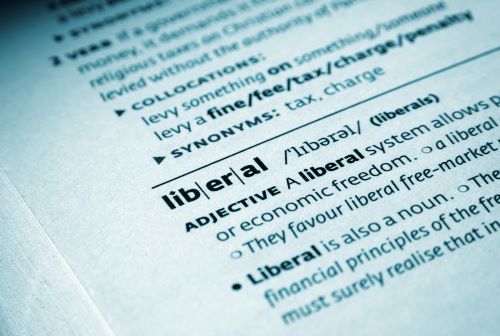Liberty Matters
The Aloof Academic Hayek vs. the Intellectual Entrepreneur Rothbard

David Gordon raises some good points about the differences in strategic vision held by the two Austrian economists Hayek and Rothbard. I would like to thank him for bringing to my attention the Volker Fund memo on strategy which Rothbard had written in 1961, some 14 years before the pieces I quoted in my essay.[61] I hadn't realized he had been thinking along those lines as early as that.
I still think there is a clear distinction between the two men's ideas about the correct strategy for promoting classical-liberal ideas, which reinforces my point about there being a significant opposition between their positions. For most of his scholarly life Hayek focused almost exclusively on the highest order of the production of ideas, first in economics (capital theory) and then in political theory (the Law, Legislation, and Liberty trilogy).[62] He made only two efforts to speak to a broader audience (i.e., to move down the structure of production of ideas to a lower level): first with The Road to Serfdom (1944) and the significant impact in the United States of the Reader’s Digest abridgment (today it might be titled Serfdom for Dummies),[63] the popular success of which genuinely surprised Hayek; and more seriously, The Constitution of Liberty (1960), the failure of which in the popular market also genuinely surprised him.[64]
Hayek also made a number of serious strategic blunders, which suggest that the advice which he was to give in 1949 in "The Intellectuals and Socialism" had not been part of his thinking in the mid-1930s. As one of the leading lights of the Austrian school in the 1930s, he had not applied the coup de grace to Keynes's theories when he had the opportunity to do so and when it would have had the most impact, before Keynesianism became the new postwar statist orthodoxy and the building of the modern welfare state began in earnest. He chose precisely this time to turn away from economic theory and move towards legal and political theory, thus leaving the gate wide open for Keynes and his supporters.
Hayek’s second strategic error, though perhaps not entirely his fault given his age (he was born in 1899) and his weak weak position at the University of Chicago’s Committee on Social Thought, was his failure to build up a school of young scholars around him to further develop his free-market ideas. He seemed not to grasp the importance of creating a second generation of scholars via a Ph.D. program who could then go out to other colleges and universities to sow the seeds of economic liberalism. Although he had some graduate students (the historians Ralph Raico and Ronald Hamowy spring to mind) he did not build a school of thought around him, as Mises and Rothbard attempted to do. Thus he remained locked in the intellectual ghetto of the highest order production of ideas with no economics graduate students and only a small audience of dedicated readers.
Rothbard, on the other hand, was both an original scholar and an intellectual entrepreneur who was acutely aware of the importance of promoting activity in all the stages of the production of ideas, from highest to lowest, even if he could not see all of them to fruition because of his limited resources. He and Leonard Liggio were active in the antiwar movement in New York City in the 1960s, reaching out to members of the antiwar New Left and the student movement; they embraced the middle-order Cato Institute and the lowest order Libertarian Party, at least initially. Incidently, Liggio moved into the middle-order Institute for Humane Studies and then the upper order Atlas Network and Liberty Fund in his later years.
Rothbard's movement up and down the structure of production of ideas, from highest to lowest, over his lifetime makes him stand out as a unique example of the scholar and intellectual entrepreneur, certainly compared to Hayek, who lacked the skills, the motivation, and the institutional framework to do anything else than what he did. Rothbard's close participation in the Mises Institute gave him the opportunity to be acive in several orders of the production of ideas at once, which both suited his personality and his strategic vision.
Endnotes
[61.] Rothbard, “What Is To be Done?” (Memorandum of July 1961), in Strictly Confidential: The Private Volker Fund Memos of Murray N. Rothbard, ed. David Gordon. Foreword by Brian Doherty (Auburn, Alabama: Ludwig von Mises Institute, 2010), pp. 7-23.
[62.] Hayek’s Law, Legislation, and Liberty trilogy: Law, Legislation, and Liberty: A New Statement of the Liberal Principles of Justice and Political Economy. Vol. 1. Rules and Order (The University of Chicago Press, 1973); vol. 2 The Mirage of Social Justice (1976); vol. 3 The Political Order of a Free People (1979).
[63.] Friedrich A. Hayek, The Road to Serfdom, with The Intellectuals and Socialism. The Condensed Version of The Road to Serfdom as it appeared in the April 1945 edition of Reader’s Digest (London: The Institute of Economic Affairs, 2005), with “The Road to Serfdom in Cartoons,” originally published in Look magazine.
[64.] The Constitution of Liberty (Chicago: Henry Regnery, 1972; 1st ed The University of Chicago, 1960).
Copyright and Fair Use Statement
“Liberty Matters” is the copyright of Liberty Fund, Inc. This material is put on line to further the educational goals of Liberty Fund, Inc. These essays and responses may be quoted and otherwise used under “fair use” provisions for educational and academic purposes. To reprint these essays in course booklets requires the prior permission of Liberty Fund, Inc. Please contact oll@libertyfund.org if you have any questions.